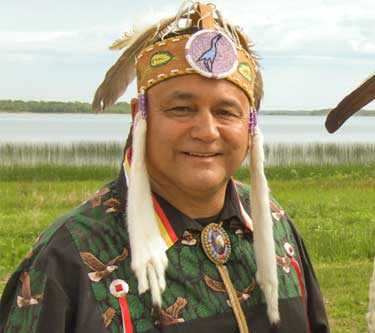MANITOULIN—Last Thursday was an historical day for aboriginal groups across Canada as the Supreme Court of Canada ruled that over 1,700 square kilometres of land in British Columbia belonged to the Tsilhqot’in First Nation, marking the first time the court has made a ruling of this kind regarding aboriginal land and, in turn, opening the door to other Canadian aboriginal groups who wish to expand their rights to claim possession of ancestral lands and to control those lands permanently.
The unanimous 8-0 decision, written by Chief Justice Beverley McLachlin, will have implications on unresolved aboriginal land claims as well as future economic or resource development on aboriginal lands.
The semi-nomadic Tsilhqot’in is a group of six aboriginal bands that numbers 3,000 members. Based on the court’s decision, semi-nomadic aboriginal groups could now claim land titles on lands that they occupied, even if it is not their permanent settlement area.
What exactly “aboriginal title” means was also defined in the supreme court’s decision: control of ancestral lands and the right to use them for economic purposes while ensuring the lands are maintained for future generations.
The title will put the lands back into the control of the Tsilhqot’in First Nation, but will not be absolute with economic development still able to proceed on land where title is established if the First Nation gives consent or in cases where the government is able “to show that it discharged its procedural duty to consult and accommodate; that its actions were backed by a compelling and substantial objective and that the government action is consistent with the Crown’s fiduciary obligation to the group,” Chief Justice Beverley McLachlin wrote in her decision.
Here on Manitoulin Island, First Nation groups were overwhelmingly pleased with the decision, anxious to see what the high court’s ruling could mean for their own First Nations unresolved land claims.
“We have been waiting for this decision from the Supreme Court,” said Tribal Chief Joe Hare of United Chiefs and Councils of Mnidoo Mnising (UCCMM) (which includes members M’Chigeeng First Nation, Whitefish River First Nation, Audeck Omni Kaning First Nation, Sheguiandah First Nation, Zhiibaahaasing First Nation and Sheshegwaning First Nation), ‘because their (Tsihqot’in First Nations) claim is so similar to our (land) claim involving our traditional area. Our people also traveled to different areas with the seasons and animal migration. This decision means that we won’t have to prove again that we have the title to areas First Nations peoples have occupied on Manitoulin.”
“We hope that this decision will also help our claim move forward more quickly now that guidelines have been established,” continued Chief Hare.
“It is a welcoming ruling that should take into account what we have been saying for 180 years,” said Wikwemikong Unceeded Indian Reserve Chief Duke Peltier of the Supreme Court ruling and its effect on Wikemikong’s land claims. “These are lands (Wikwemikong lands) that we have been entrusted with taking care of. The territory we are in is Anishinabek.”
“This decision is going to change the relationship (between aboriginal groups and the government),” continued Chief Peltier. “This confirms Aboriginal title does exist, with some limitations. What it will establish is a means for a relationship building process. It also establishes that there is no place in the law of Canada for ‘terra nullis’ (that no one owned the land prior to European assertion of sovereignty).”
“Anishinabek historically, and other First Nations across Canada, used lands by following migration patterns and sustained resources,” Chief Peltier further explained. “Under the doctrine of discovery, if Anishinabek or First Nations people were not permanently settled on an area of land, someone had the right to claim the land as their own, which is a reason why many aboriginal communities actually have larger traditional territories then they have now (than their reserves).”
“This is a pretty favourable ruling for First Nations and will have positive implications across Canada,” Anishinabek Nation Grand Council Chief Patrick Madahbee told The Expositor. “The government tries to manipulate politics and First Nations rights to lands, manipulating the process in the best interest of the government. This Supreme Court ruling is the beginning of the truth starting to come out and demonstrates the true nature of First Nations rights to land. This ruling is what we, aboriginal groups across Canada, have been saying all along.”





